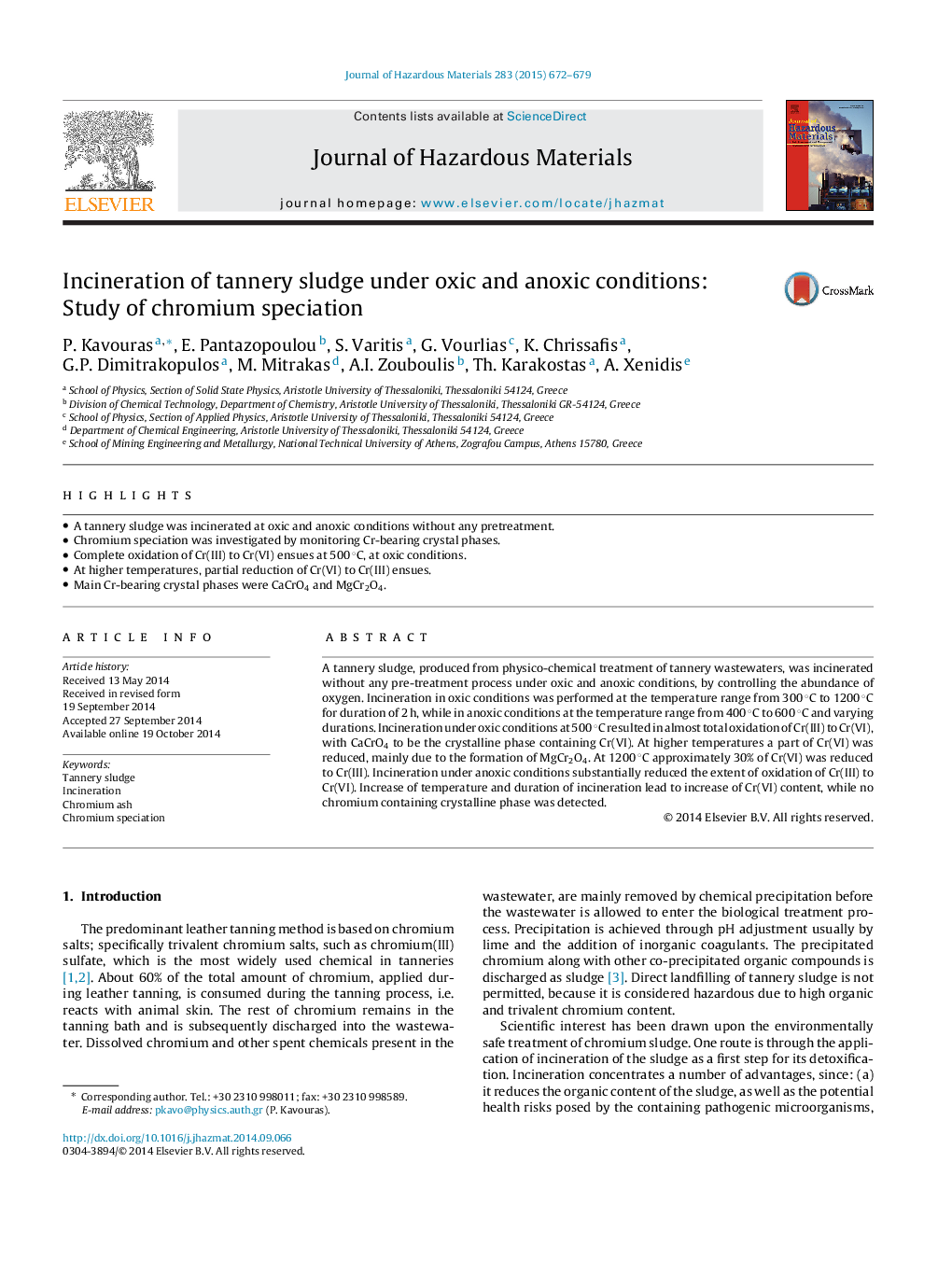| Article ID | Journal | Published Year | Pages | File Type |
|---|---|---|---|---|
| 576315 | Journal of Hazardous Materials | 2015 | 8 Pages |
Abstract
A tannery sludge, produced from physico-chemical treatment of tannery wastewaters, was incinerated without any pre-treatment process under oxic and anoxic conditions, by controlling the abundance of oxygen. Incineration in oxic conditions was performed at the temperature range from 300 °C to 1200 °C for duration of 2 h, while in anoxic conditions at the temperature range from 400 °C to 600 °C and varying durations. Incineration under oxic conditions at 500 °C resulted in almost total oxidation of Cr(III) to Cr(VI), with CaCrO4 to be the crystalline phase containing Cr(VI). At higher temperatures a part of Cr(VI) was reduced, mainly due to the formation of MgCr2O4. At 1200 °C approximately 30% of Cr(VI) was reduced to Cr(III). Incineration under anoxic conditions substantially reduced the extent of oxidation of Cr(III) to Cr(VI). Increase of temperature and duration of incineration lead to increase of Cr(VI) content, while no chromium containing crystalline phase was detected.
Related Topics
Physical Sciences and Engineering
Chemical Engineering
Chemical Health and Safety
Authors
P. Kavouras, E. Pantazopoulou, S. Varitis, G. Vourlias, K. Chrissafis, G.P. Dimitrakopulos, M. Mitrakas, A.I. Zouboulis, Th. Karakostas, A. Xenidis,
